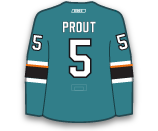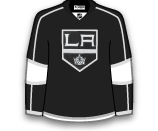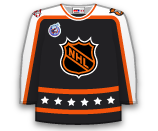Lewington played 8:49 as a No.7 defenseman last night but goes down so Tyler Boyd can come up and dress as the 12th forward on Saturday. Lewington has four goals and two assists (six points) in four AHL games this season.

Lewington played 8:49 as a No.7 defenseman last night but goes down so Tyler Boyd can come up and dress as the 12th forward on Saturday. Lewington has four goals and two assists (six points) in four AHL games this season.

Don't panic, Samsonov isn't going anywhere. This is a cap move to allow the Capitals to bring up Travis Boyd to dress as a 12th forward on Saturday. Samsonov probably won't even leave the team and Vitek Vanecek will be sent down and Samsonov will be "recalled" when either Nic Dowd or Carl Hagelin are healthy.

This is a salary cap related move. The Capitals need a forward because Nic Dowd and Carl Hagelin are out, so Vanecek comes up and the higher-paid Ilya Samsonov heads to the AHL for the game. The move opened up enough cap space for Travis Boyd to be called up. Samsonov will likely swap spots with Vanecek next week.

Washington played with 11 forwards on Friday but Boyd comes up to dress as the 12th forward on Saturday. He has split his time between the NHL and AHL, totalling four assists in six games with the Capitals and six points (4G / 2A) in four games with the Bears. Tyler Lewington went down to Hershey to make room for Boyd.

With Nic Dowd and Carl Hagelin both out on Friday, Lewington comes up to serve as a seventh defenseman. Lewington has no points in six total games this season, five in the NHL and one in the AHL.

Poehling played in four straight games but was sent back before Friday's game in Washington. Jordan Weal will take the spot that was previously filled by Poehling. He returns to the AHL, where he has collected three goals and two assists (five points) in 14 games.

Kylington has scored three goals in three games since being sent back to Stockton. With T.J. Brodie out indefinitely, Kylington returns to the NHL, where he has one assist in 14 games this season.

White was a fourth-round pick in 2015 and appeared in three NHL games with the Devils last season. The 22-year-old defenseman, who has three assists in 15 AHL games this season, could make his season debut on Friday night. Sami Vatanen (upper-body) was moved to IR to make room for White.

There's no indication of who Asplund might be coming up for, but the 2016 second-round pick (No.33 overall) has collected eight points (1G / 7A) in 13 AHL games this season. He has not appeared in an NHL game to-date.

Frederic will likely make his season debut on Friday night because Zach Senyshyn is out for at least four weeks with a lower-body injury. Frederic, who has five assists in 15 AHL games this season, failed to register a single point in 15 games with Boston in 2018-19.

Prout had just one assist during his two-game conditioning stint. Prout has suited up in just one game with the Sharks this season but was sidelined by an upper-body injury prior to his conditioning stint.

In addition to calling up Jonathan Ericsson on Wednesday, Hicketts will also join the Red Wings in California. Hicketts had one assist in four games with the Red Wings earlier in the season and leads all Griffins defensemen with nine points (0G / 9A) in 11 AHL games.

Gardner did not have a point in seven games with the Stars earlier in the year and has picked up six points (3G / 3A) in nine games with Texas. His call-up suggests that Cogliano will not play on Thursday after suffering an injury in Calgary on Wednesday.

With Danny DeKeyser, Trevor Daley and now Patrik Nemeth injury, Ericsson makes his return to the NHL. Ericsson was assigned to the Griffins after clearing waivers on October 23rd and has picked up two assists in 10 AHL games. He may replace Dylan McIlrath or Alex Biega and make his season debut in Los Angeles.

Boqvist scored one goal in six games while playing 14:27 ATOI with the Blackhawks. The 19-year-old defenseman returns to the AHL where he had one goal in six games before being called-up.

MacEwen comes up because Brandon Sutter was hurt early in Tuesday's win over the Predators. MacEwen has just one assist in four career NHL games and will likely make his season debut on Thursday. The 23-year-old has eight points (3G / 5A) in 13 games with Utica this season.

With Jay Beagle missing Tuesday's game, Graovac's call-up suggests that he will replace Beagle in the lineup on Thursday. Graovac, who has nine points (7G / 2A) in 62 career NHL games, has one goal in six AHL games this season.

Kostin was selected in the first round (No.31 overall) in 2017 and is one of the Blues' top prospects. The 20-year-old forward has scored three goals with five assists (eight points) in 14 AHL games this season and he is poised to make his NHL debut in Columbus on Friday.

With Vladimir Sobotka out for at least four weeks, Lazar makes his return to the NHL. The 24-year-old currently ranks second on the Americans (AHL) in points, picking up four goals and five assists (nine points) in 11 games. He has not suited up for Buffalo yet but comes up with 51 points (15G / 36A) in 246 career NHL games.

